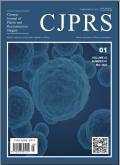Inferior alveolar nerve injury after sagittal split osteotomy of the mandible: A literature review
Chinese Journal of Plastic and Reconstructive Surgery
Pub Date : 2024-12-01
DOI:10.1016/j.cjprs.2024.11.001
引用次数: 0
Abstract
Background
Inferior alveolar nerve (IAN) injury is a serious potential complication of orthognathic surgery because the osteotomy cut-line during sagittal split osteotomy (SSO) of the mandible runs close to the mandibular canal. According to statistics, 9%–85% of patients who undergo such surgery suffer from complications. It causes neurosensory disorders (NSD) of the lower lip and chin with a wide variety of symptoms such as numbness, hypoesthesia, hyperesthesia, hypoalgesia, hyperalgesia, and allodynia. However, the accurate planning and thorough analysis using cone-beam computed tomography helps improve the predictability of possible IAN damage by considering the specific anatomical features of each patient and all risk factors. This study aimed to review the frequency of IAN occurrence, risk factors, and diagnostic, prophylactic, and treatment methods used for inferior alveolar nerve regeneration and IAN sensory disturbance recovery following SSO of the mandible.
Methods
We conducted a comprehensive literature search (2020–2024) across PubMed, Scopus, Google Scholar, and ScienceDirect, focusing on mandibular SSO complications, IAN damage, nerve regeneration, and treatments such as corticosteroids, vitamin B12, platelet concentrates, and low-level laser therapy. All systematic review, randomized controlled trial, controlled clinical trial, or retrospective/prospective study involving both animals and humans were included.
Results
Surgeons prescribed medicines for general therapy before surgery and applied intraoperative treatment methods to minimize the degree of NSD manifestation after surgery. Fortunately, majority instances of NSD recover spontaneously by 6 months after the operation; however, if symptoms persist after 1 year, it is considered permanent NSD, which may cause a significant decrease in quality of life. In the postoperative period, assessing neurosensory disturbances with subjective (questionnaires) and objective tests (light touch, 2-point discrimination tests, and others), or their combination, is necessary for determining the management. According to recent studies, dexamethasone, a complex of vitamin B, melatonin, and low-level lasers, is actively used in inferior alveolar nerve regeneration during and after SSO. Moreover, isolated studies have reported the intraoperative use of platelet concentrates during SSO.
Conclusion
The mentioned treatment methods demonstrated positive results in decreasing NSD. However, their effectiveness for IAN regeneration has not been sufficiently studied.
下颌骨矢状面劈开截骨术后下牙槽神经损伤的文献回顾
背景:下颌矢状面劈开截骨术(SSO)的截骨线靠近下颌管,因此下牙槽神经(IAN)损伤是正颌手术的一个严重的潜在并发症。据统计,9%-85%的接受此类手术的患者会出现并发症。它引起下唇和下巴的神经感觉障碍(NSD),伴有各种各样的症状,如麻木、感觉不足、感觉亢进、痛觉不足、痛觉过敏和异常性疼痛。然而,考虑到每个患者的具体解剖特征和所有危险因素,锥束计算机断层扫描的精确规划和全面分析有助于提高对可能的IAN损伤的可预测性。本研究旨在回顾下牙槽神经的发生频率、危险因素以及下牙槽神经再生和下牙槽神经感觉障碍恢复的诊断、预防和治疗方法。方法通过PubMed、Scopus、谷歌Scholar和ScienceDirect进行全面的文献检索(2020-2024),重点研究下颌骨单点SSO并发症、IAN损伤、神经再生以及皮质类固醇、维生素B12、血小板浓缩物和低水平激光治疗等治疗方法。所有涉及动物和人类的系统评价、随机对照试验、对照临床试验或回顾性/前瞻性研究均纳入。结果术前进行常规药物治疗,术中采用适当的治疗方法,尽量减少术后非sd的表现程度。幸运的是,大多数NSD患者在术后6个月自行恢复;然而,如果症状持续1年,则被认为是永久性非功能性障碍,这可能导致生活质量的显著下降。术后,通过主观(问卷调查)和客观测试(轻触、两点辨别测试等)评估神经感觉障碍,或两者结合评估,对于确定治疗是必要的。根据最近的研究,地塞米松,维生素B,褪黑激素和低水平激光的复合物,在SSO期间和之后的下肺泡神经再生中被积极使用。此外,有孤立的研究报道了单点登录术中使用血小板浓缩物。结论上述治疗方法对降低NSD有积极作用。然而,它们对IAN再生的有效性尚未得到充分的研究。
本文章由计算机程序翻译,如有差异,请以英文原文为准。
求助全文
约1分钟内获得全文
求助全文
来源期刊

Chinese Journal of Plastic and Reconstructive Surgery
Surgery, Otorhinolaryngology and Facial Plastic Surgery, Pathology and Medical Technology, Transplantation
CiteScore
0.40
自引率
0.00%
发文量
115
审稿时长
55 days
 求助内容:
求助内容: 应助结果提醒方式:
应助结果提醒方式:


